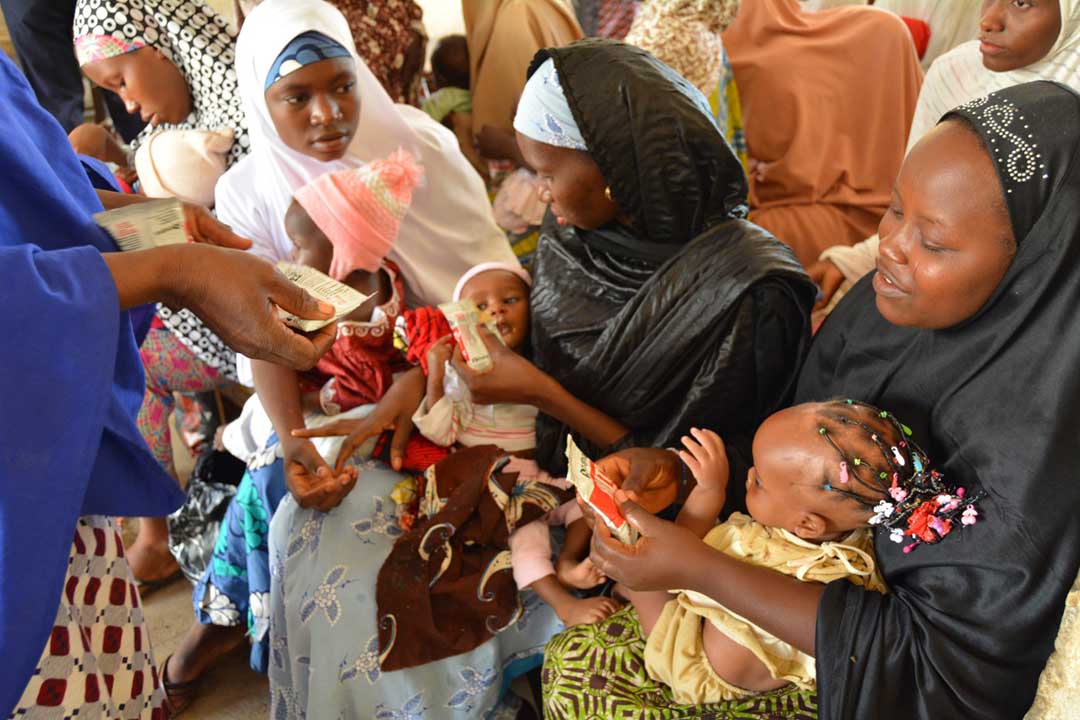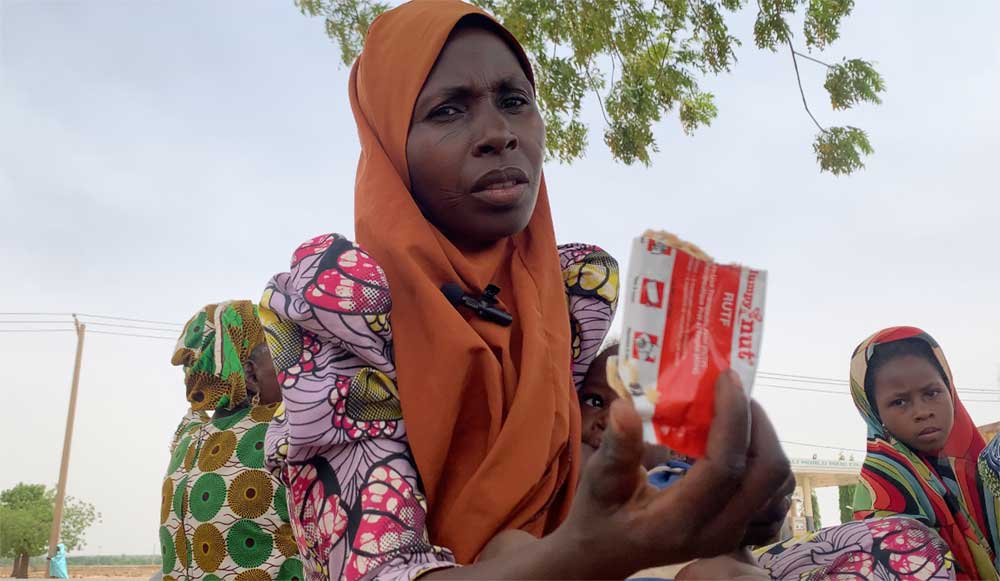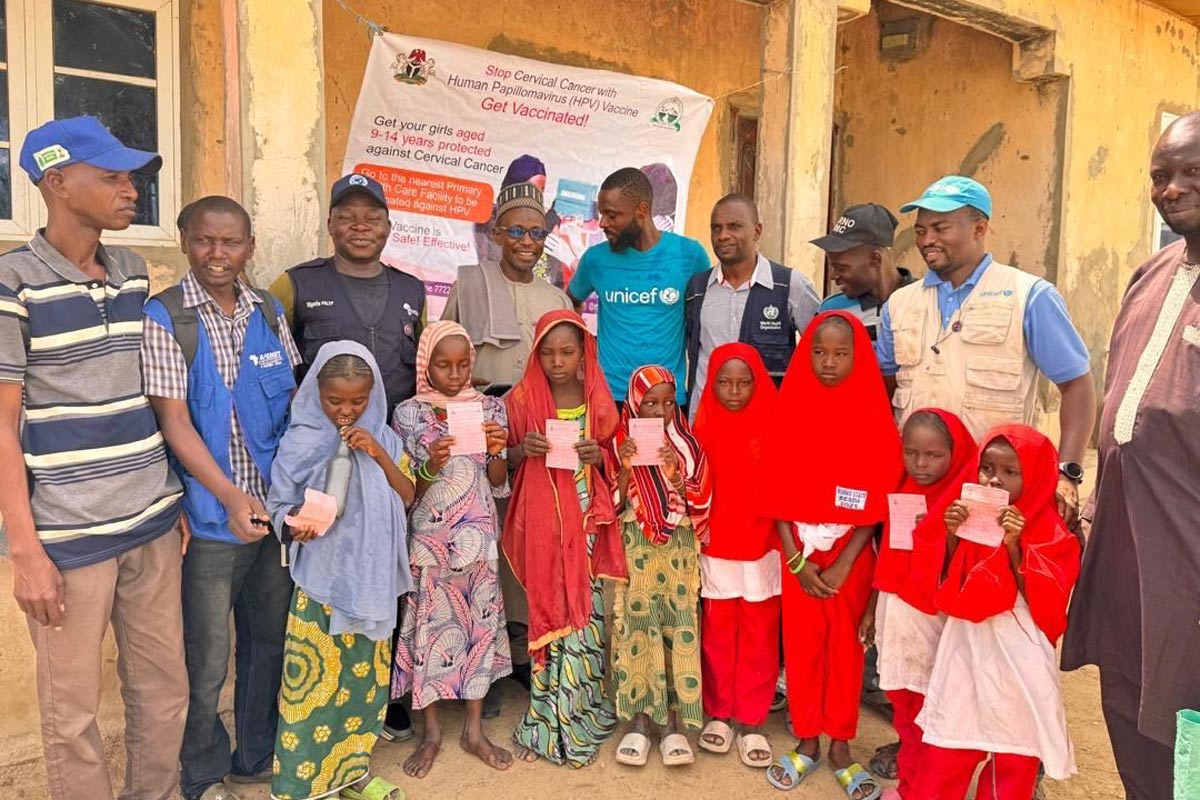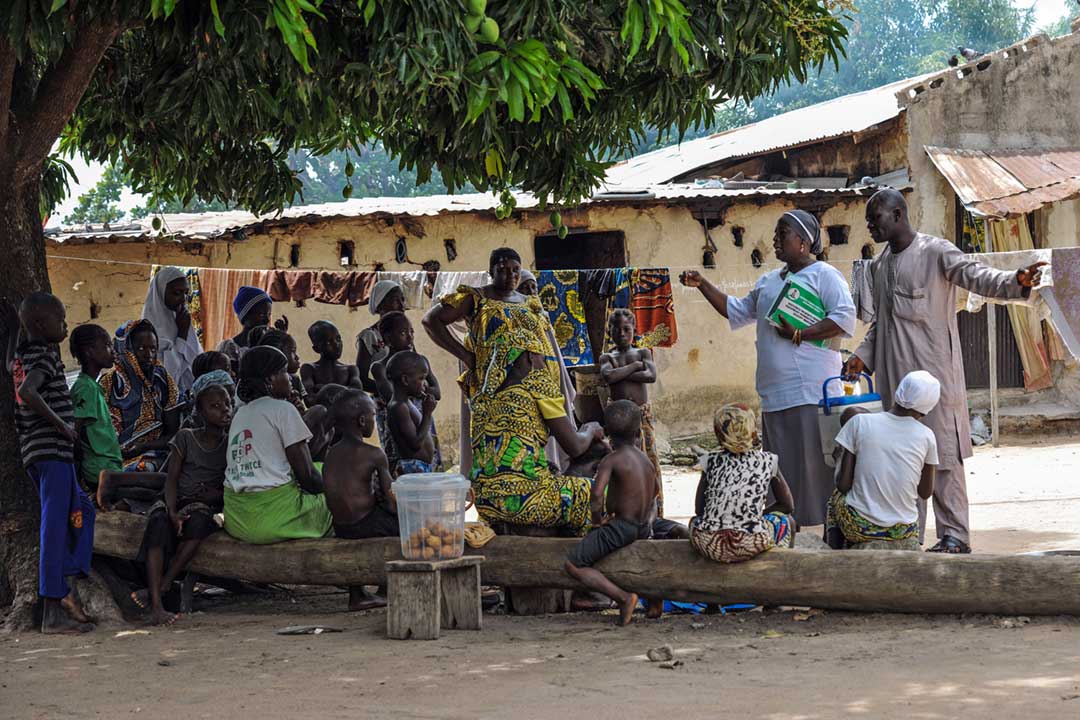Community-based feeding centres are giving starving children a shot at life in Nigeria’s Katsina
Amid a crisis of malnutrition, children in Katsina state are desperately vulnerable. Community-based feeding centres offer them the chance to fight another day.
- 22 June 2023
- 6 min read
- by Zubaida Baba Ibrahim

Rashida, 31, was six months pregnant with twins when she and her family fled from Batagarawa community in Katsina, a state in northwest Nigeria, due to armed violence.
Being displaced suddenly plunged them into poverty. "We fled with nothing," she says – without access to their means of livelihood, and without access to adequate aid.
Rashida's family began to experience long stretches of hunger where they would starve for days. "Even if we get food, it is never enough. If we eat in the evening, we might not eat in the morning. If we eat in the morning, we will not eat in the evening," she recalls. "Every day it is like that."
“Some are so badly affected that whatever is handed to them they will take it to their mouths. Whatever.”
– Dr Abdulkadir Yasore, malnutrition centre team lead
Due to the lack of sufficient nutritious food in Rashida's body, her daughters, Hassana and Husseina, were born with extremely low-birth weights.
There is always a high tendency to low-birth-weight for pregnant women that do not eat enough, Julian Dadzie, a clinical nutritionist at Jos University Teaching Hospital explains. She adds that, "Hungry mothers do not have enough nutrients to help with [foetal] development."
Hassana and Husseina did not grow much even after their birth and this made Rashida worried. She says she was referred to a malnutrition centre near her and the twins were diagnosed with severe acute malnutrition.
Since then, Rasheeda's twins have been getting medical support from the centre, which specialises in giving malnourished children like them a fighting chance.
Managing malnutrition
Katsina is one of the states in Nigeria's northwest that has come under repeated attack by armed groups, creating a persistent situation of insecurity that has resulted in the highest number of displacements1 across the troubled region.
Millions are suffering amid the unprecedented humanitarian crisis – but children are bearing the worst of it.

Credit: Zubaida B Ibrahim
In a typical week, Rashida and her daughters were certain of getting food handouts just twice – on Wednesdays and on Sundays. Even then, it was shared with other family members. This is the reality for many displaced persons here.
The effects on kids' health are long-lasting. Katsina state sees the highest rate of stunting in Nigeria, with more than 200,000 children under the age of five suffering from moderate acute malnutrition (MAM) or severe acute malnutrition (SAM). "This makes them vulnerable to other diseases such as cholera and measles during periods of outbreaks," Dadzie explains.
Acute malnutrition tends to affect the physical and mental wellbeing of those affected. Dr Abdulkadir Yasore, team lead in one of the malnutrition centres in Batsari community, states that, "Some are so badly affected that whatever is handed to them they will take it to their mouths. Whatever."
Low nutritional status also impacts a child's immune defences, making them more vulnerable to infectious diseases. Measles, for instance, kills an estimated one in 1,000 unvaccinated, but well-nourished children. But amid poverty and malnutrition, mortality rates from the virus have been known to rise as high as 15%.
In this region, the malnutrition crisis has also worsened the incidence of Noma disease – an often-fatal face-eating sickness.
Have you read?
To respond to the crisis, 'C-MAM Centres', or 'community-based management of acute malnutrition centres,' were set up in various communities with support from international health organisations.
When children are brought to his centre, Yasore says they are screened with mid-upper arm circumference, or 'MUAC', tapes. MUAC is a measuring tool that allows health workers to determine if a patient is acutely malnourished, and to what extent.
A MUAC measurement of less than 11cm is an indicator of severe acute malnutrition. When it is up to 12.5cm, the child is diagnosed with moderate acute malnutrition.
When MUAC is between 12.5cm and 13.5cm, it suggests that the patient is at risk and their caretakers are counselled on how to promote the child's nutrition. A MUAC of over 13.5cm indicates that the child is well nourished.
The next step for SAM and MAM patients is an appetite test. "We instruct the mother or caregiver to wash their hands properly, then we give them a cup of milk and tell them to feed the child," Yasore says, adding that, "if the child is able to drink three-quarters of the milk that means the child can still eat. But if the child is unable to drink we refer them to a stabilisation centre."
The stabilisation centres are in-patient units where acutely malnourished children are put on Ready-to-use Therapeutic Food (RUTF) and constantly supervised until their MUAC is at least above 13cm. Rashida was discharged from the centre a day before she was interviewed for this report. She says, "We spent nine weeks there getting treated."
RUTF is also given following discharge, to help children fully regain their appetite. RUTFs, popularly known in the community as Dan Kwamaso, are a peanut-based paste super-charged with various nutritional components. "It is like a balanced food with peanuts, soya beans, folic acid and other elements that can boost the children's health," Yasore explains.
Obstacles
While the malnutrition centres are free for all users, Abdulkadir Yasore says that mothers do not understand how the MUAC works. He explains that when mothers are told that their child is not malnourished at all they tend to become angry.
"When some mothers find out their child is fine, they will give thanks to God and leave but there are some who will accuse our team of lying and demand the RUTFs," he notes.
Although Yasore does not suggest that mothers resell the RUTFs, their accessibility and distribution have been a subject of public discourse in the malnutrition programme space.
Mothers have stood accused of deliberately starving their children to get RUTFs. In places like Borno, in the northeast, it has been alleged that mothers go as far as poisoning their children to obtain RUTFs and then sell them for money.
However, Médecins Sans Frontières (MSF) debunks these accusations. "Any complete cartons found at resale sites are likely the result of diversion by people working in the health system, NGO workers, UN agencies or the Ministry of Health, because mothers have no access to whole cartons, only to individual sachets," wrote Michel-Olivier Lacharité, MSF's head of the Emergency desk, in a blog last year.
There are eight to ten C-MAM centres across 15 local government areas in Katsina, but in the midst of ongoing hunger, they do not provide a long-term or permanent solution to the malnutrition crisis. Rashida says that in the span of just one year, her twins have been admitted to these centres thrice.
1. Source: Displacement Tracking Matrix (DTM) of the International Organization for Migration (IOM), February 2023.
More from Zubaida Baba Ibrahim
Recommended for you









